Chopard
The Origin Story of the NATO Strap
Chopard
The Origin Story of the NATO Strap
His moustache bristles at the term ‘NATO strap’. I hastily say, “G10?” He smiles. “You’re the first civilian I have heard call it that. Correctly, I might add.” Not the sort of chap to anger, Bacon explained precisely what constitutes the regulation version. Officially, you get a choice of one in grey and of standard width. But blame Sean Connery for wearing a Rolex Submariner in Dr. No with a striped nylon ‘regimental’ strap, thus endowing them with instant fashionista credibility.
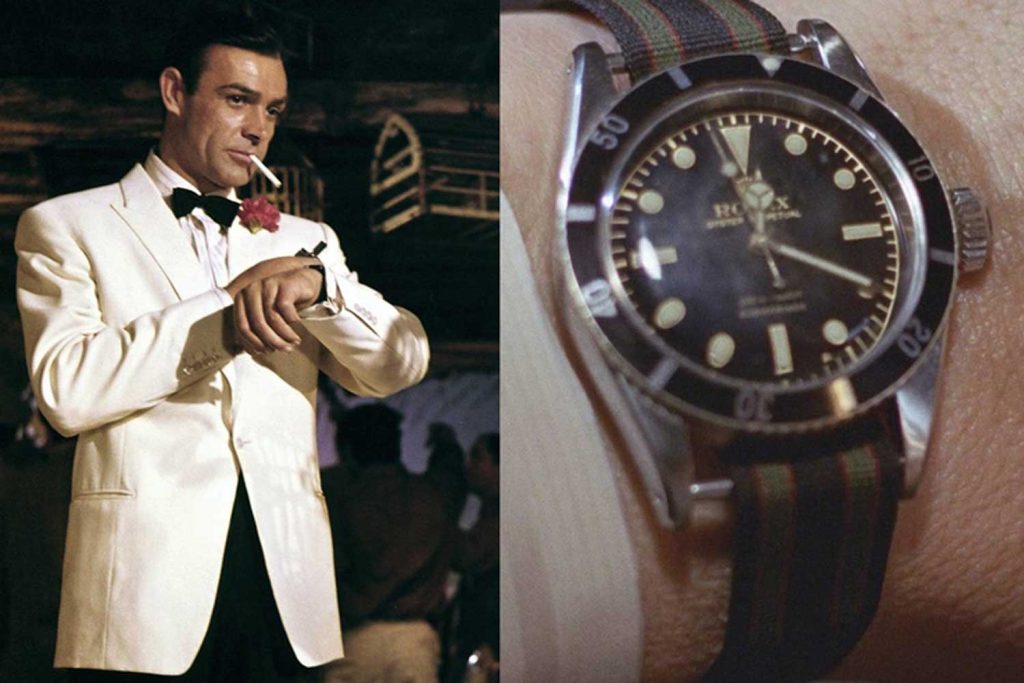
Sean Connery wearing a Rolex Submariner in Dr. No
A Modern Interpretation
If Connery is not entirely at fault, as it was 52 years ago, then Tudor’s to blame, even though the company doesn’t call its cloth over-under straps ‘NATOs’. The brand’s adoption of the over-under for its super-desirable sporting models has changed watch fashion for good. What was previously a utilitarian means of attaching a watch to a soldier’s wrist has been transformed into a method of personalising one’s own timepiece. ‘Military chic’ has never had a better ambassador. Tudor and Daniel Wellington are merely two of the current adopters.
It must be said at this point that Tudor did not originate the use of the nylon, canvas or cloth military straps for civilian watches. Seiko, Glycine, Hamilton and many others have been using them for years, if admittedly in a cod-military way rather than as fashion statements. When you have a watch range like Hamilton’s Khaki collection, or offer for civilian purchase watches that are nearly identical to genuine military issue, as does Seiko, you could hardly use anything else.
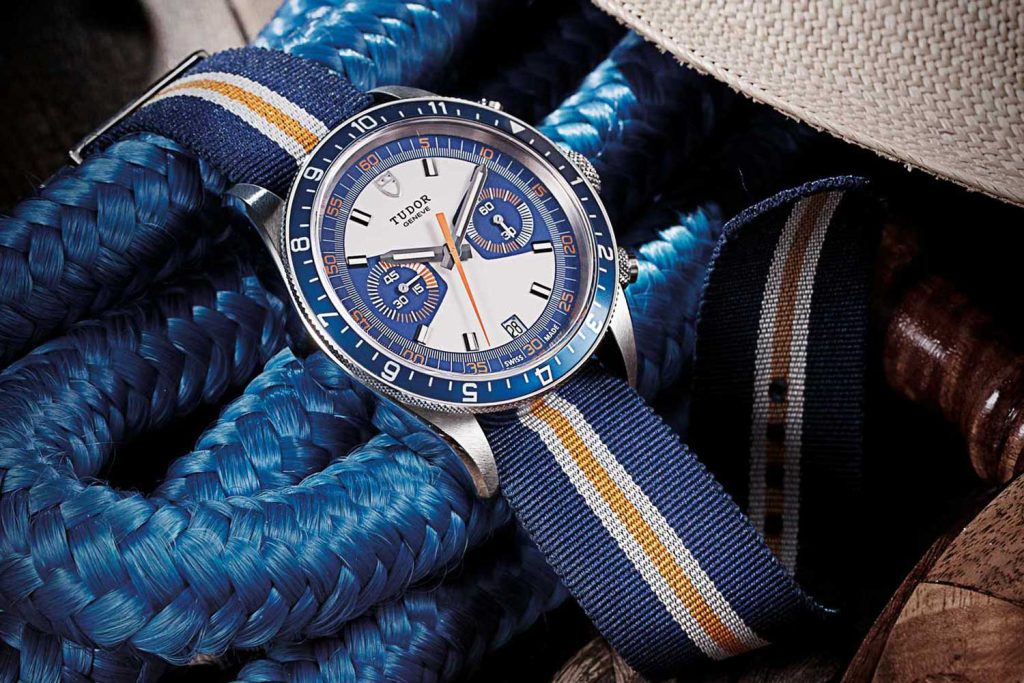
Tudor Heritage Chrono Blue
What all have in common is the safety element: over-under straps, in addition to being easy to change because they require no tools, were designed to prevent the loss of a watch if one spring bar broke. This only applies to over-under types, which will allow a watch to dangle but remain secure if a bar breaks. This is more important with removable spring bars, as rare are the times when fixed bars snap.
As the rising tide of users wants to call them NATOs, purists have been unable to stop the use of the misnomer. Just don’t utter it around Bacon. The actual use of the term ‘NATO strap’ is simply shorthand. It came about because the official G10 also has a NATO Stocking Number (NSN). The only proper name for the genuine article is ‘G10’, which means that anything other than the true military issue can be called whatever you like. Certainly, Connery’s strap as seen in Dr. No is not a G10 because it predates the classification by more than a decade.
Catalogue Coding
In 1973, using the same military-speak that gave us ‘W.W.W.’, the ‘Strap, Wrist Watch’ appeared in the British Ministry of Defence Standard (DefStan) 66-15; the campaign starts here to call them ‘S.W.W.’s. If you were enlisted, you could acquire one by filling out a G1098 form, or G10 for short. The NATO stock numbers are Army/Navy (6645-99-124-2986) and RAF (6645-99-527-7059).
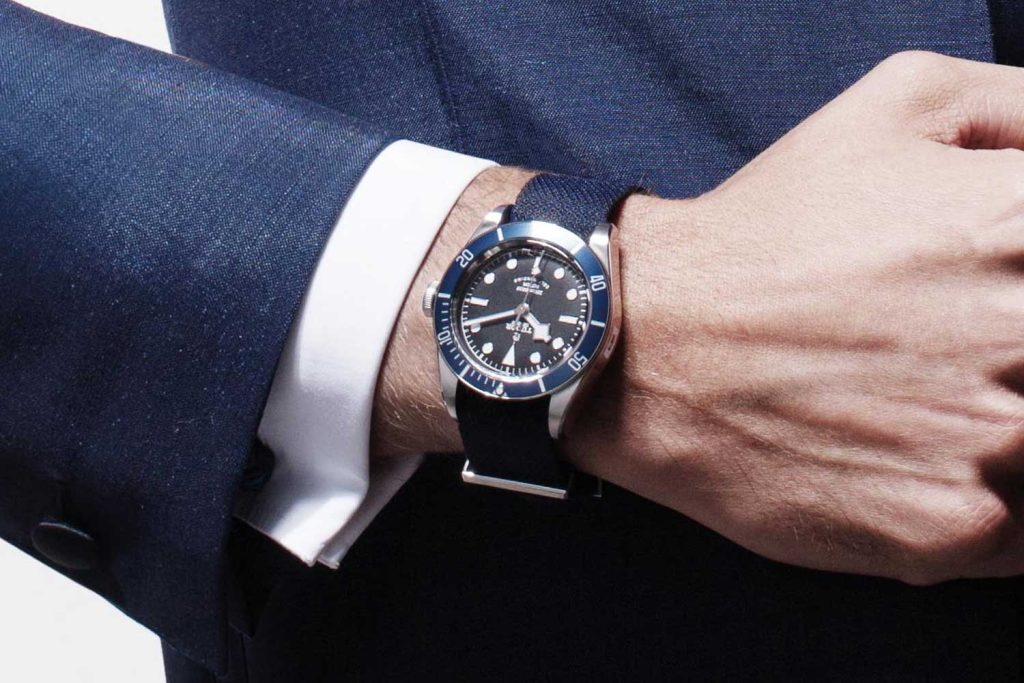
Tudor Heritage Black Bay with navy fabric strap (Image © Revolution)
This formed a loop that secured the position of the timepiece, with the watch able to be positioned plus or minus a few millimeters, depending on the size of the watch head. As the main strap that passes over both spring bars, it can withstand the loss of one; the G10’s double strap is also more comfortable than a single over-under strap.
In the 41 years since it was officially specified, the G10 strap has been joined by an 18mm version, while the buckle and loops are now stainless steel. Although supplied by one maker, and despite the tight specifications, G10s do seem to vary slightly in colour, while the ‘weave’ of the material ranges from tightly woven to slightly coarse.
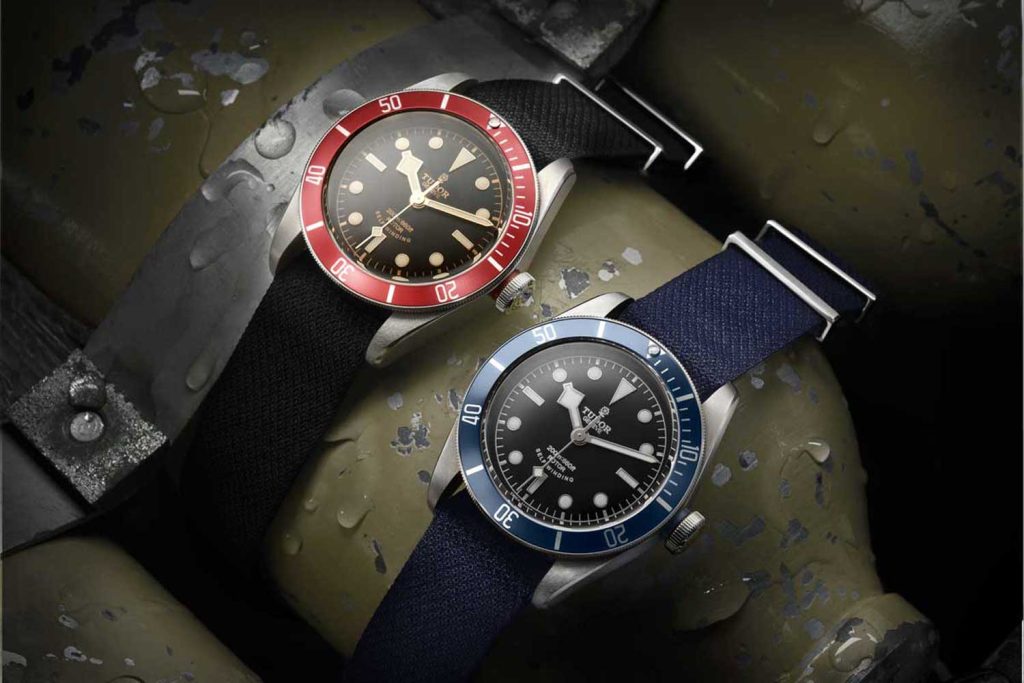
Tudor Heritage Black Bay
While not as official as a grey G10, the regimental versions are worn by real military personnel, whose pride in their regiments led to the adoption of said straps, a la Sean Connery as Bond. There are now so many colours on offer commercially, as well as a choice of fabrics, that it is possible to customise one’s watch without inflicting irreversible modifications, typically using the strap to accent the dial or its details, e.g. orange hands.
Modern Family
This writer has used a number of sources for over-under straps lately, taken as I am with the leather versions. Suppliers are multiplying, and even Amazon.com is bursting with choices. Because any watch can take an over-under strap if there is enough space between the spring bar and the case, the only deterrent would be a material too thick to yield to the folds. MonkeySwag.com has a huge range of colours, materials and widths; I recently fitted one in mustard-coloured leather to a T.N.T. watch, and swapped one of Glycine’s admittedly terrific, standard issue over-unders for one of MonkeySwag’s, just to allow me to keep the original in its box.
Sean Cheung from MonkeySwag says that his customers for NATOs are varied. “They range from military service personnel, current and retired, to fashionistas. We also have F1 Racing Drivers (and notably a female in this category), polar expedition leaders, scuba divers, extreme sports enthusiasts, senior lecturers, tech and gadget geeks and, increasingly, the fashion-conscious public.
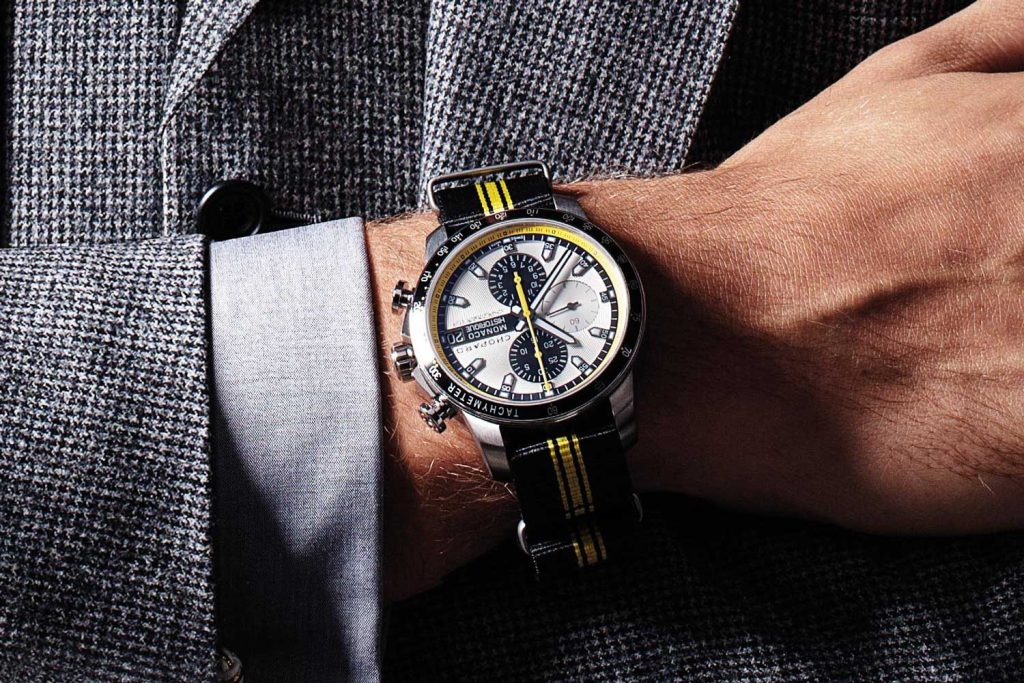
Chopard Grand Prix de Monaco Historique Chronograph with black and yellow ‘NATO’ strap (Image © Revolution)
Cheung says he prefers to customise his own NATOs, “so that the buckle fastens in the middle of the underside of my wrist (like most regular straps) rather than offset, as is de rigueur for that NATO ‘tucked back under’ look.”
Another source, best known for custom-made straps to suit Panerais and the like, is the StrapSmith. The company’s Rob Montana says that the customers buying NATOs, “are people who want to switch up from the traditional style and are aiming for a sporty look. This can be achieved with either nylon or leather NATOs.” Purists stick with grey, but the StrapSmith supplies all of his NATOs in widths beyond the 18mm or 20mm; I bought a couple of 24mms.
Montana worked with Shinola on designing its leather NATOs, which are “now on quite a few of their watch models. I have one myself and I quite like it. I currently offer small, higher quality, nylon NATOs and have been building quite a few leather variations, as well as a one off Alcantara version. Almost any leather from conventional straps can be used to make a NATO equivalent.” In other words, any watch – lug depth aside – can be fitted with an over-under strap.
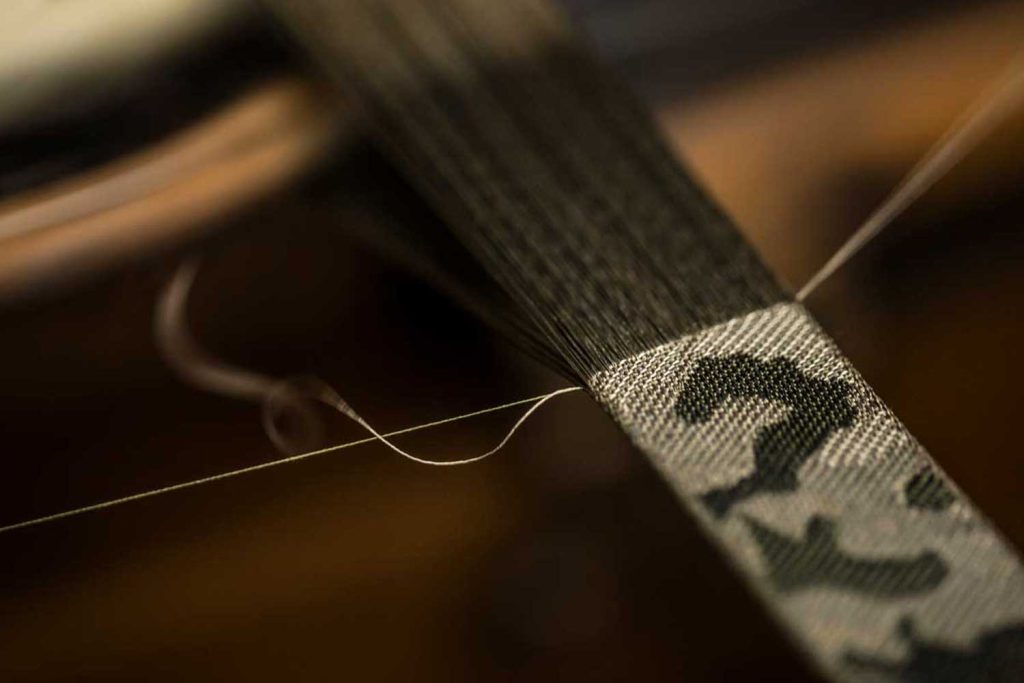
Camo strap being woven for the Tudor Ranger
“Partly, it was to reflect the motor-racing theme, the colours of the dial of the Heritage Chronograph in blue, white and orange, and to match the colours of the Black Bays, blue and maroon. But we also did it,” he added with a twinkle in his eye, “because it looks so cool.”










